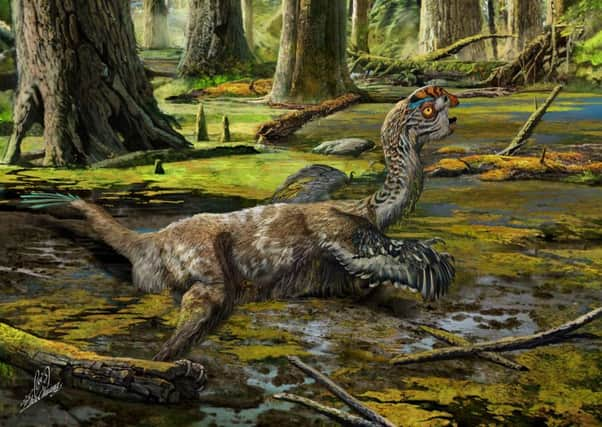Winged mud dragon was last of dinosaurs


The previously unknown creature bears more than a passing resemblance to the fictitious tauntaun from the Star Wars movies.
The two-legged beast belongs to a group of feathered dinosaurs called oviraptorosaurs, which are characterised by their short, toothless heads and sharp beaks.
Advertisement
Hide AdAdvertisement
Hide AdSome, including the newly found specimen, also had crests of bone on their heads that are thought to have been used to attract mates and intimidate rivals.
The remains of the beast were uncovered on a building site near Ganzhou, in southern China.
The skeleton, found during excavations using explosives, is remarkably well preserved and almost intact – despite some damage caused by a dynamite blast.
It was captured for eternity lying on its front with wings and neck outstretched.
Experts believe it may have died in this pose after becoming mired in mud around 70 million years ago.
The new species has been named Tongtianlong limosus, meaning “muddy dragon on the road to heaven”.
Fossils found in recent years suggest oviraptorosaurs had been enjoying a population boom, evolving into new species, in the 15 million years before dinosaurs vanished.
The flightless animals are thought to have been one of the last groups to diversify before the asteroid impact killed off all non-bird dinosaurs.
Advertisement
Hide AdAdvertisement
Hide AdArchaeologists from the University of Edinburgh, who analysed the bones, say the find provides new clues into how these winged dinosaurs were diversifying before fate intervened and wiped them out.
“This new dinosaur is one of the most beautiful, but saddest, fossils I’ve ever seen,” said Dr Steve Brusatte, of the University of Edinburgh’s School of GeoSciences.
“But we’re lucky that the mud dragon got stuck in the muck, because its skeleton is one of the best examples of a dinosaur that was flourishing during those final few million years before the asteroid came down and changed the world in an instant.”
The study was carried out in collaboration with the Chinese Academy of Geological Sciences.
The institution’s Dr Junchang Lü says the discovery shows the rich diversity of oviraptorosaurs that inhabited Ganzhou in the late Cretaceous period.
He added: It will provide important information on the study of evolution, distribution and behaviour of oviraptorid dinosaurs.”